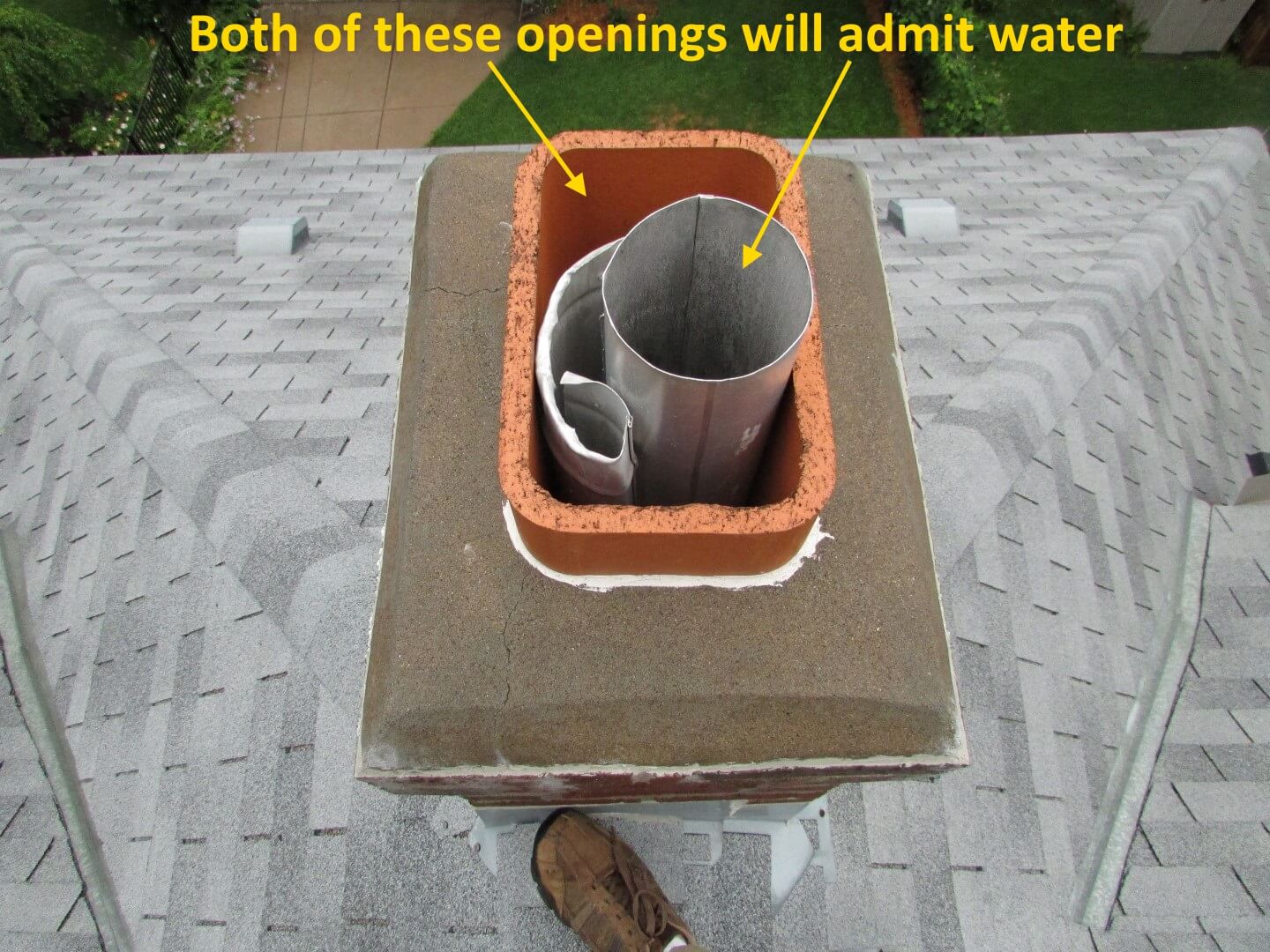 If you are like most homeowners, you don’t think about your chimney until you have a problem. Because chimneys project above the roof line, they are exposed to more severe weather than any other part of your home. Spending a little time to protect your chimney now may save you thousands of dollars down the road after more serious damage occurs.
If you are like most homeowners, you don’t think about your chimney until you have a problem. Because chimneys project above the roof line, they are exposed to more severe weather than any other part of your home. Spending a little time to protect your chimney now may save you thousands of dollars down the road after more serious damage occurs.
Chimneys take a beating from severe weather year round. The concrete crowns of masonry chimneys often crack with age, allowing water to leak in. Water penetration is the single greatest cause of deterioration and damage. This article explains how the crown works, what it should look like and what to do about leaking problems.
Let’s examine typical masonry chimney. A newer chimney crown should be several inches thick, reinforced with rebar and caulked to the clay flue. Older crowns may not be this solid, but if they’re basically sound they can be repaired with polyurethane caulk.
The crown of a masonry chimney is a concrete top that ideally looks something like the one shown. It has an angled top to shed water and it overhangs the brick to keep drips off the chimney sides. It surrounds the clay flues but doesn’t encase them.
Chimney Water Leaks
A 1/4-inch gap allows the clay flues to expand and contract from repeated heating and cooling without cracking (or cracking the crown). The flues “float” inside the brick chimney walls; that is, they’re supported by the brick but not attached to it. A high-quality polyurethane caulk seals the flue/crown gap and prevents water penetration.
In truth, few chimneys built before the mid-1980s have crowns built this well. Many early crowns were simply sloped washes of leftover mortar. Most have cracked and deteriorated, opening gaps around the flues.
Stopping chimney water leaks project, it requires some simple preparation. Before you start, make sure that the pitch of your roof isn’t too steep and that you are comfortable climbing up on your roof. Also, make sure to use some type of fall protection to prevent serious injury. It is very recommended to do the job when the weather is sunny.
If you feel safe and confident about walking on your roof, climb up and inspect the crown. If it’s sound, caulk cracks and gaps with polyurethane right away. That is what only takes to stop chimney water leaks. Even though the job sounds easy, however after examining at the roof condition, and you are not sure to work this on your own, it is no harm to consider hiring professional to do the job.
It is advisable to hire a chimney builder by search online or for “Chimney Builders and Repair” in your yellow pages. Another alternative that you can do is hire a chimney sweep (“Chimney Cleaning”) certified by the Chimney Safety Institute to evaluate the condition of your chimney and fix it. Flue caps will help reduce water coming down the flue itself, but they won’t help much if you have a bad crown.



